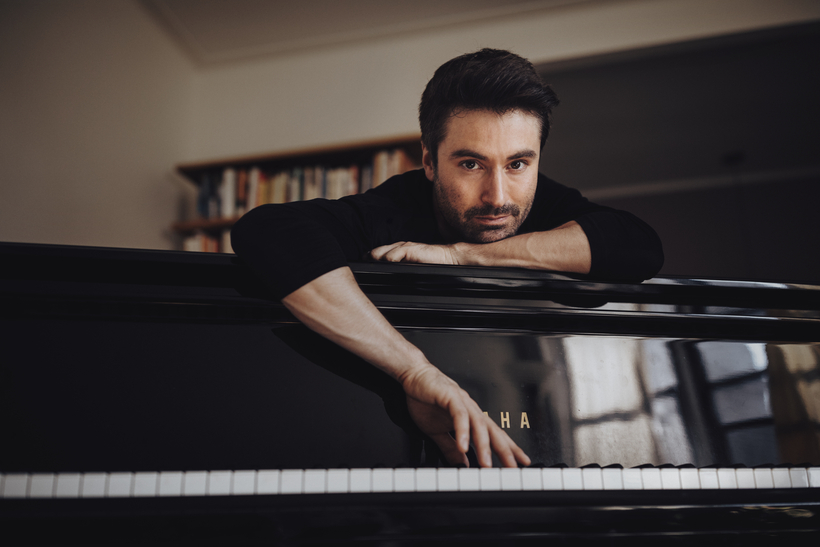The Goldberg Variations? Again? What is there to add? Setting aside treatments that have stood the test of time (the Glenn Gould recordings and the Jerome Robbins ballet, to cite just two), who can keep up with the latest barrage? Even now, Anne Teresa De Keersmaeker is touring her one-women dance marathon in Europe, as Parker Ramsay’s newly released harp arrangement vies for attention with Lang Lang’s Sony Classical blockbuster twin-pack of live and studio performances.
Born to Americans in Paris, now based in Brooklyn, Dan Tepfer himself has earned a niche of distinction in the Goldberg pantheon for his cult classic Goldberg Variations/Variations (2011), which takes each and every one of the 30 variations notated in Bach’s score as the springboard for a fresh improvisation whipped up on the spot. Only the pandemic has interrupted a steady stream of bookings all over the map.
At the same time, the downtime has triggered a flurry of new initiatives, including an incipiently viral series of sophisticated YouTube livestreams with top jazz artists at six bucks a pop—and those Goldbergs again, this time upside down.
Tepfer has earned a niche of distinction in the Goldberg pantheon for his cult classic Goldberg Variations/Variations (2011), which takes each of the 30 variations as the springboard for a fresh improvisation.
Classically trained, steeped in mathematics, astronomy, and IT, Tepfer brings to every facet of his glittering work an infectious spirit of play. Beside the albums and the gigs there are his two elegant apps: EarGuru, for sharpening one’s sense of pitch, and DoubleTime, for deepening one’s sense of tempo. Then there are the video plug-ins that convert live music into smart screensavers, not to mention his paperweight-size 3-D renderings of harmonic relationships executed in sandstone. The cover photo for last year’s release Natural Machines shows Tepfer in profile, a Left Bank Hamlet contemplating such a piece as he might the skull of Yorick.
The tracks on Natural Machines emerged over a period of five years from the mechanisms of a Yamaha Disklavier, a piano electronically equipped to capture live performance for playback without loss of nuance. Taking that capability a giant step further, Tepfer hooked up the Disklavier to an external processor, which rang changes on the live material, and sent its new version back, essentially simultaneously, to play on the Disklavier. A listener hears, in effect, four hands sharing a single keyboard at once: Tepfer’s own two hands of flesh and blood in tandem with two virtual hands conjured up by the ghosts in the machines. Put another way, from a gizmo most pros dismiss as an electronic pianola, Tepfer has coaxed the bionic Ginger Rogers to his flesh-and-blood Fred Astaire.
“When I create these algorithms,” he once told NPR, speaking of the code in the external computer, “I think of them as little planets. Each planet has its different gravitation from other planets, and also the atmosphere might be thick or thin, and every time you land on this planet, you need to find a way to dance. That moment of pure discovery, when I’m first entering that new planet, that’s so magical. Now the piano is actually creating the composition with me.”
Though the Upside Down Goldberg Variations pinwheels off Natural Machines, the new project is conceptually much simpler. Tepfer plays each segment live, with the spontaneity that implies, then sits and listens as the Disklavier “mirrors” it—not “backward,” which would wreak havoc with the rhythm, but inverted, like the reflection of some snow-capped peak in an Alpine lake, delivering a funhouse semblance in which a few may sense Bach’s presence while many very honestly will not. How many human brains are wired for such topsy-turvy symmetries?
Matthew Gurewitsch writes about opera and classical music for AIR MAIL. He lives in Hawaii

